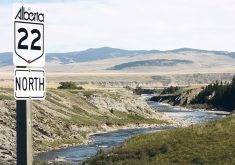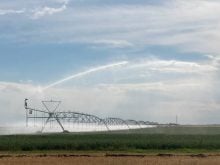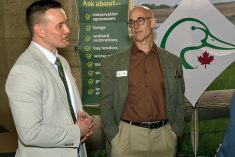Three Canadian groups are developing a similar initiative that would prevent the conversion of grassland to other uses
WINNIPEG — The U.S. Department of Agriculture has made a $138 million commitment to preserve grasslands and wetlands and cut greenhouse gas emissions from agriculture.
U.S. agriculture secretary Tom Vilsack announced the investment March 13, explaining the funds come from the Inflation Reduction Act, which is intended to transition America toward a greener economy.
“(It) is enabling us to get a record amount of conservation on the ground, including through conservation easements, which give farmers and ranchers the tools they need to protect sensitive landscapes, like wetlands and grasslands, as well as prime farmland,” he said.
Read Also

New program aims to support plant-based exports to Asia
Understanding the preferences of consumers in Taiwan and how they differ from Indonesia or Malaysia isn’t easy for a small company in Saskatchewan.
The $138 million is being directed at farmland that will sequester carbon dioxide emissions and reduce methane or nitrous oxide emissions.
The approved projects include initiatives in seven states — Arizona, California, Montana, South Dakota, Texas, Utah and Wisconsin — to prevent the conversion of grassland to another use.
As well, there are projects to restore grassland habitat in Iowa, Indiana and Missouri.
The USDA’s investment in grasslands could be a positive omen for ranchers north of the border. The Canadian Cattle Association is developing a program that would pay producers for preserving grasslands.
Last fall, the CCA, Ducks Unlimited and the Nature Conservancy of Canada (NCC) unveiled an idea called the Grasslands Conservation Initiative.
The basic concept is that the federal government and conservation groups would pay livestock producers to maintain grasslands on their farm.
The CCA and the NCC estimate that the country is losing about 150,000 acres of grassland per year from pasture converted to cropland or swallowed up by urban expansion. Across the Prairies, farmers are knocking down trees and cultivating grasslands to capture larger profits by growing canola, peas, wheat and other crops.
To slow or stop that conversion, it could require $175 million annually in incentives, the CCA says.
“If the government and society values the biodiversity and habitat that grasslands provide, then you’re going have to figure out a way … to keep it,” said CCA vice-president Tyler Fulton, who farms near Birtle, Man.
Grasslands store carbon in the soil and provide critical habitat for birds and small mammals.
The details of a Grasslands Conservation Initiative are in the discussion phase. One possible model is an agreement between a producer and a conservation group for a certain period of time to maintain the grassland.
However, this isn’t about the federal government or an environmental group taking ownership of pastures and rangeland, Fulton said in early February.
“I want to make it clear that this does not feed dollars (toward) conservation groups to buy ranchland themselves. That is the exact opposite of the goal that the CCA has.”


















